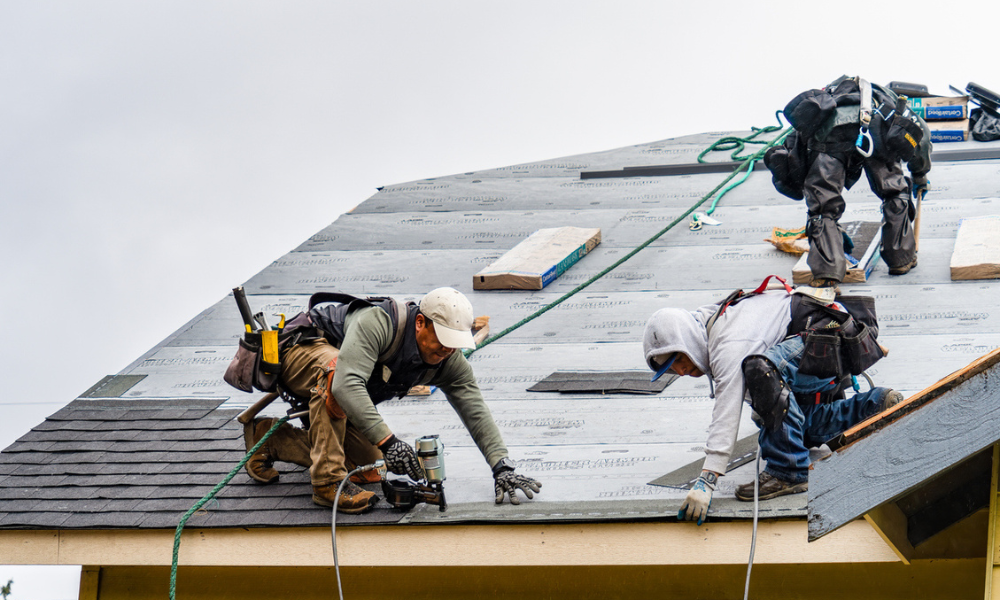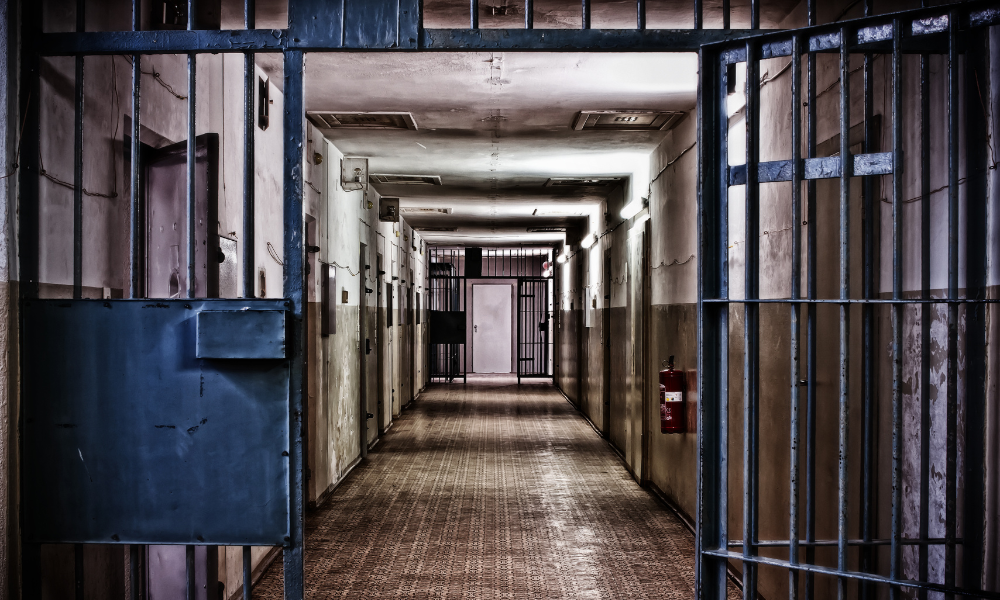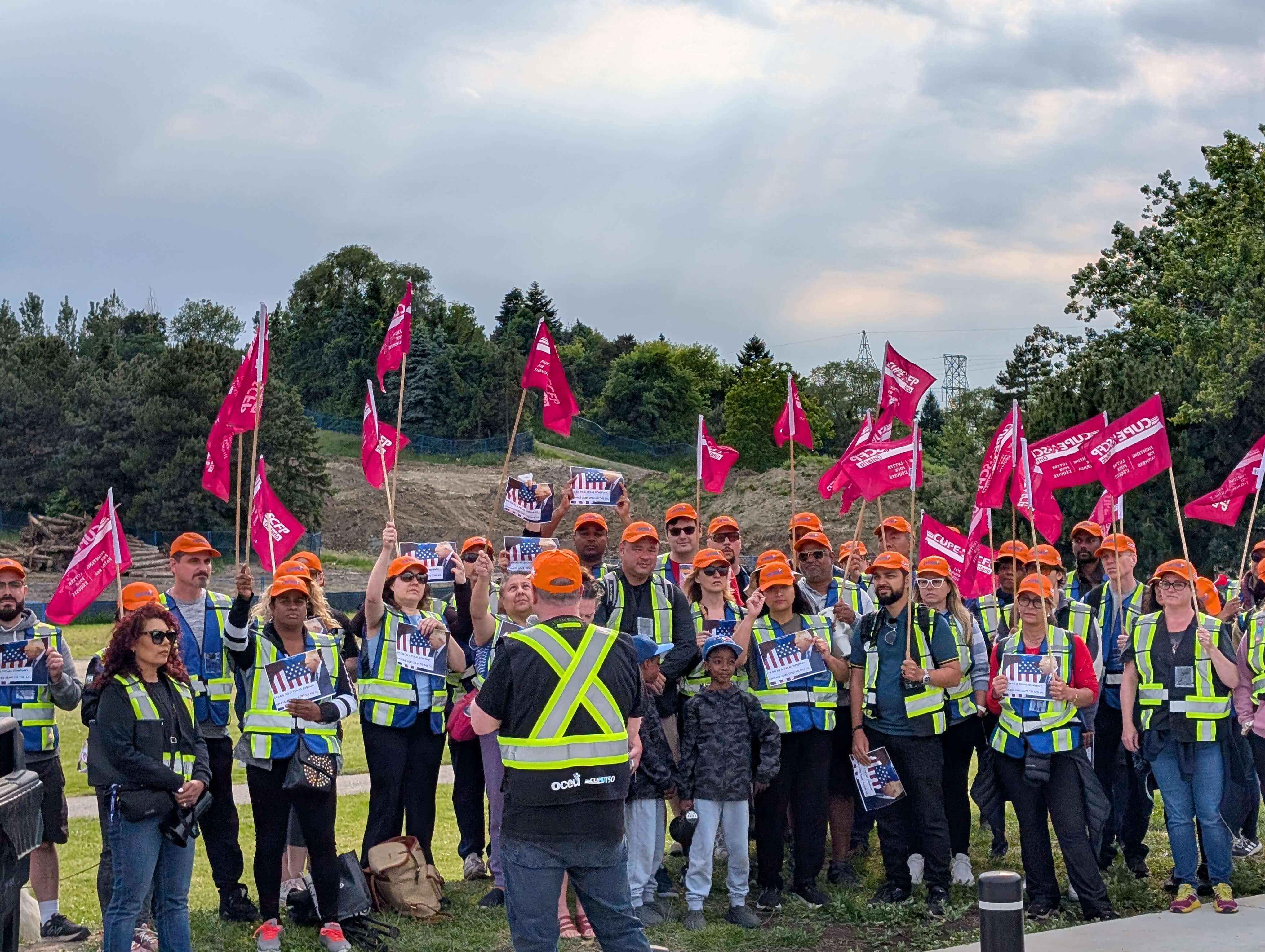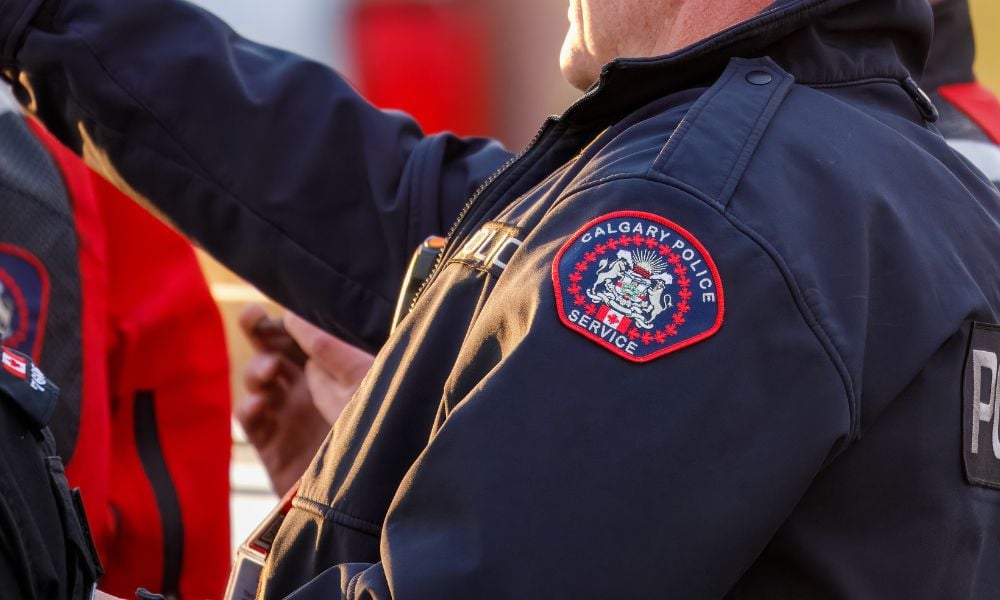The right roof safety equipment plays a key role in preventing roofers from falling. Find out which types of roofing safety gear and devices your team needs

Falling is one of the biggest risks roofers face. If you have employees working at heights, you’re required to put in place the appropriate safety precautions to prevent them from falling. These measures include providing your team with the right roof safety equipment.
In this article, Canadian Occupational Safety gives you a walkthrough of the different fall protection equipment that occupational health and safety laws require. We will also list our picks for the best available safety equipment for roofers on the market.
If you’re wondering which safety gear and devices are required to protect your staff against fall hazards, this guide can help. Read on and find out how to pick the best roof safety equipment for your team.
What types of safety equipment are required for roofing?
Most jurisdictions require employers to have fall protection systems in place for employees who are at risk of falling at least three metres. These include:
1. Guardrails
Guardrails are a type of fixed barrier designed to prevent employees working at heights from falling. Most employers opt for guardrails as a means of fall protection because they are simple to use and install. They also don’t require other types of personal protective equipment (PPE). Guardrails are convenient alternatives where covers, floors, and walls cannot be installed.
Guardrails typically consist of a top rail, mid-rail, and toe boards with evenly spaced post. They can be job-built, meaning they are constructed at the worksite by employees. They can also be manufactured and come in a wide range of materials.
The Canadian Centre of Occupational Health and Safety (CCOHS) lists several factors that are key to making guardrails an effective fall protection system:
- They must be high enough to prevent workers from falling over the top.
- They must be strong enough to withstand the force of the number of workers who are likely to lean or push up against them.
- They have evenly spaced posts that are close enough to prevent workers from falling through the gaps.
- For manufactured guardrail systems that don’t have vertical posts, they must provide equal protection against gaps.
- They must be installed as close to the open edge as reasonable.
- They must extend along the whole length of the opening or unprotected edge.
- They must use materials with smooth surfaces, such as metal and wood, so as not to cut skin or snag clothing.
Here are our top picks for the best roofing guardrails:
- CAI Safety steel non-penetrating guardrails
- Frontline Universal 10-feet guardrails
- Kee Safety Kee Walk guardrail system
- Hilmerson Safety Rail System hot-dipped galvanized guardrails
- Skyline non-penetrating self-ballasted guardrail systems
Find out which type of roof safety equipment fit your business’ needs in this essential guide to personal safety equipment. This guide includes downloadable checklists of the PPE requirements for each industry.
2. Safety harnesses
Safety harnesses are an important part of an effective travel restraint system. This type of PPE acts as an attachment between the user and a stationary anchor point held by a cable and a locking mechanism. As roof safety equipment, harnesses are designed to prevent roofers from falling or moving outside a safe range. Wearing the right roofing harnesses often spells the difference between disabling or even fatal injuries and worker safety.
There are five classes of safety harnesses used in Canadian worksites:
- Class A harnesses are used for general fall arrest situations. They have large D-ring anchor points on the back. These harnesses are most suited for construction and roofing jobs.
- Class L harnesses are also called ladder harnesses. This type of safety harness allows users to attach themselves to climbing structures or vertical safety systems.
- Class P harnesses, also called positioning harnesses, have two D-ring anchors near the hips. This type of safety harness allows free use of both hands while working at heights.
- Class E harnesses are designed for emergency evacuation. They have two D-ring anchors on the shoulders that let the user maintain an upright position while being raised or lowered.
- Class D harnesses are used for tasks that require workers to be raised or lowered. This type of harness has two D-ring anchors on the shoulders. Some versions feature padded seats.
Here are our top choices for the best safety harnesses for roofers:
- 3M DBI-SALA ExoFit X-Series safety harnesses
- Honeywell H700 full-body safety harness
- MSA V-FIT safety harness
- Palmer Safety Hammerhead safety harness
- PSG Guardian Fall Protection S1 safety harness
Check out our complete list of the best safety harnesses for the worksite in this guide.
3. Travel restraint systems
A travel restraint system is an essential form of roof safety equipment. It allows roofers to work on edges without falling over. A travel restraint system is often used where guardrails aren’t possible.
A travel restraint system has several components, according to CCOHS. These include:
- a Class A full-body safety harness
- a fixed-length or adjustable lanyard
- a lifeline
- rope grab to attach the lanyard to the lifeline
- sufficient anchorage and anchorage connectors that meet your jurisdiction’s load requirements
All components must be CSA-approved.
Since we’ve already revealed our top choices for harnesses, we will now list our choices for the best safety lanyards, which are an integral part of a travel restraint system:
- 3M DBI-SALA EZ-Stop energy-absorbing lanyard
- Bunzl Safety Workhorse shock-absorbing lanyard
- Honeywell Titan II pack-type shock-absorbing lanyard
- MSA Safety V-Series Leading Edge safety lanyard
- Tractel Tracforce two-arm shock-absorbing lanyard
4. Fall arrest systems
CCOHS defines a fall arrest system as a “group of equipment, components, and systems used to arrest (stop) a fall from height.” The agency adds that fall arrest systems should only be used when other fall protection measures aren’t possible or available.
Fall arrest systems are designed to:
- minimize the free fall distance
- reduce the impact of the fall
- prevent workers from striking other objects or surfaces while falling
- protect workers from the pendulum effect or swing falls
Fall arrest systems used in Canadian jobsites, including roofs, must meet several safety standards, including:
- CSA Z259.17: Selection and use of active fall-protection equipment and system
- CSA Z259.12: Connecting components for personal fall arrest systems
- CSA Z259.16: Design of active fall-protection systems
Here are our picks for the top fall arrest systems for roofing tasks.
- Atbest SecuRope Quickset cable vertical lifeline system
- Malta Dynamics 50' personal fall arrest system
- MSA Safety V-Shock Edge personal fall limiter
5. Safety nets
CCOHS classifies safety nets as a form of passive fall protection system. This type of safety equipment can be installed either as a barrier to prevent a fall or beneath the worksite to catch a falling worker. Safety nets have three main functions:
- to reduce the fall distance
- to absorb the impact of a fall
- to minimize the likelihood or seriousness of a fall injury
Safety nets are often used when installing a fixed barrier or an anchored fall arrest system is impractical or impossible. They also don’t replace a fixed barrier, such as guardrails, as the preferred method of fall protection.
When choosing the right safety net for your team, CCOHS recommends considering the following factors:
- whether it’s intended to catch falling people or objects, or as a barrier to prevent falls
- what's in the areas above, below, and around the safety net
- the maximum capacity the safety net will need to support
- the length of time it will be used, along with possible weather conditions during the period
- local requirements in your jurisdiction related to safety net systems and fall protection
These are our picks for the best safety nets for roofers:
- Barry Cordage fall protection safety net
- Eagle MH barrier netting system
- Leavitt Safety fall protection and debris safety netting
Find the answers to the most common questions about fall protection systems in Canada in this guide.
What standards does roof safety equipment in Canada need to meet?
All fall protection systems, including roof safety equipment, must meet Canadian Standards Association (CSA) requirements for safety. Roofing safety gear and devices approved by the American National Standards Institute (ANSI) may also be acceptable in some worksites.
Here are some safety standards that fall protection equipment in Canada must comply with:
Roof safety equipment in Canada – applicable safety standards
|
Standard |
Description |
|
CSA Z259.1-05 (R2020) |
Body belts and saddles for work positioning and travel restraint |
|
CSA Z259.2.2-17(R2022) |
Self-retracting devices |
|
CSA Z259.2.3:16 (R2020) |
Descent devices |
|
CSA Z259.2.4-15 (R2020) |
Fall arresters and vertical rigid rails |
|
CSA Z259.2.5-17(R2021) |
Fall arresters and vertical lifelines |
|
CSA Z259.10-18 |
Full body harnesses |
|
CSA Z259.11-17(R2021) |
Personal energy absorbers and lanyards |
|
CSA Z259.12-16(R2021) |
Connecting components for personal fall arrest systems (PFAS) |
|
CSA Z259.13-16(R2020) |
Manufactured horizontal lifeline systems |
|
CSA Z259.15-22 |
Anchorage connectors |
|
CSA Z259.16-21 |
Design of active fall protection systems |
|
CSA Z259.17 -21 |
Selection and use of active fall protection equipment and systems |
|
ANSI/ASSP Z359.1-2020 |
The Fall Protection Code |
|
ANSI Z359.2-2017 |
Minimum requirements for a comprehensive managed fall protection program |
The full CSA requirements can be viewed on the CSA Group website, but you must first create an account with the CSA Communities platform. Once logged in, click on the text below the “OHS Standards/View Access” graphic. You can select your jurisdiction to access the corresponding CSA Standards in your location.
Learn more about the importance of fall protection systems in the worksite in this article.
What other types of PPE do roofers need?
Apart from fall protection systems, roofers need different types of personal protective equipment to protect them from the different hazards of their jobs. These include:
1. Hard hats
Hard hats are required for all construction projects across Canada. All staff working at the job site, including roofers, must always wear protective headgear. Hard hats protect workers from head injury caused by impact, falling or flying objects, or electrical shock and burns.
Check out our picks for the best hard hats for construction in this guide. If you're looking for personalized hard hats in Canada, there are several top customization providers that offer quality products with customizable options like logos, colors, and designs.
2. Safety footwear
Workers are required to wear safety footwear if they’re at risk of foot injury or electric shock at the jobsite. Roofers are commonly exposed to these types of hazards. The work boots must comply with CSA Z195:14 safety standards for protective footwear. If your workers are at risk of injury due to slipping, you must also ensure that they wear slip-resistant footwear.
Check out this guide to see our picks for the most comfortable work boots for construction workers.
3. Protective eyewear
Employees must wear appropriate eye and face protection if their jobs expose these body parts to potential injuries. Roofers may be exposed to flying debris, sharp objects, and harmful chemicals that can easily send them to the emergency room. This is why safety glasses are an important part of a roofer’s PPE.
Provinces and territories have different regulations when it comes to protective eyewear, but most require safety glasses that meet CSA Z94.3 standards.
Check out our top choices for the best safety glasses for the construction site in this guide.
Is roof safety equipment required in Canada?
Occupational safety and health regulations in most jurisdictions require employers to provide fall protection systems if workers are at risk of falling at least three metres. These systems are on top of the PPE that workers wear on the jobsite.
Each jurisdiction has slightly different rules when it comes to fall protection systems. The table below sums up the regulations for each province and territory. You can click on the links for the full details of each piece of legislation in your region.
Roof safety equipment – fall protection regulations across Canada
|
Jurisdiction |
Legislation |
General requirements |
|
SOR/86-304 Sections 12.01 to 12.09 |
Employers must provide a fall-protection system if work is done:
|
|
|
Occupational Health and Safety Code, 191/2021 Part 9, Fall Protection Sections 138 - 161 |
An employer and a supervisor must ensure that a worker is protected from falling:
|
|
|
Occupational Health and Safety Regulations, B.C. Reg. 296/97 Part 11, Fall Protection, Sections 11.1 to 11.10 |
An employer must ensure that a fall protection system is used when work is being done at a place:
|
|
|
Workplace Safety and Health Regulation, Man. Reg. 217/2006 Part 14, Fall Protection, Sections 14.1 to 14.29 |
This section applies to every workplace where there is a risk of a worker falling:
|
|
|
General Regulation -N.B. Reg. 91-191 Part VII, Protective Equipment, Sections 49 - 51 |
The employer shall provide, and the employee shall continually use a fall protection system when an employee works from:
|
|
|
Occupational Health and Safety Regulations, 2012, N.L.R. 5/12 Part X, Fall Protection, Sections 138 to 146 |
A fall protection system is required where a worker is at risk of falling from a work area that is:
|
|
|
Northwest Territories and Nunavut |
Occupational Health and Safety Regulations, R-039-2015 Part 7, Personal Protective Equipment, Sections 103 to 109 and Part 9 Safeguards, storage, warning signs and signals, Sections 118 to 124 |
An employer shall ensure that workers use a fall protection system at a work site if:
|
|
Workplace Health and Safety Regulations, N.S. Reg. 52/2013 Part 21, Fall Protection, Sections 21.1 to 21.4 |
Fall protection is required if a person is at risk of falling from a work area where the fall distance is:
|
|
|
Construction Projects, O. Reg. 213/91 Sections 26 - 26.9 And Industrial Establishments, R.R.O. 1990, Reg. 851 Section 85 |
Construction Regulations: Apply where a worker may be exposed to any of the following hazards:
Industrial Regulations: Apply where a worker is at risk of falling and the surface to which they might fall is more than 3 metres below the position where they are situated |
|
|
Fall Protection Regulations, EC2004-633 |
An employer is required to provide a means of fall protection where a worker is at risk of falling from a work area that is:
|
|
|
Regulation respecting occupational health and safety, O.C. 885-2001 Division XXX, Means and Equipment for Individual and Group Protection Sections 347 - 354.1 And Safety Code for the construction industry R.R.Q. 1981, c. S-2.1, r. 6 Division II, General Provisions Sections 2.9.1 to 2.9. |
Workers shall be protected against falls in the following cases:
|
|
|
Occupational Health and Safety Regulations, 2020 Sections 9-2 - 9-5 |
An employer or contractor shall develop a written fall protection plan if:
|
|
|
Occupational Health and Safety Regulation, O.I.C. 2006/178 Protective Equipment and Clothing - Fall Arrest Sections 1.37 to 1.43 |
Where it is not practical to protect a worker by guards, guardrails, safety nets, or other devices, the worker shall be provided with and required to use the appropriate fall arrest protection:
|
Visit our Products Resources page to get more news and information about the best roof safety equipment in Canada. Be sure to bookmark this page for the latest industry updates.
Do you think roof safety equipment is worth the investment? Let us know in the comments.
Related Articles:
The best safety glasses for construction workers
The most comfortable work boots for construction sites
The best hard hats to recommend to your construction team
The best work gloves for heavy-duty protection
The best hearing protection for construction workers
The best welding helmets for industrial protection
The best ear protection for loud machinery
The 10 best respirators for painting projects
The best welding respirators for heavy-duty tasks





